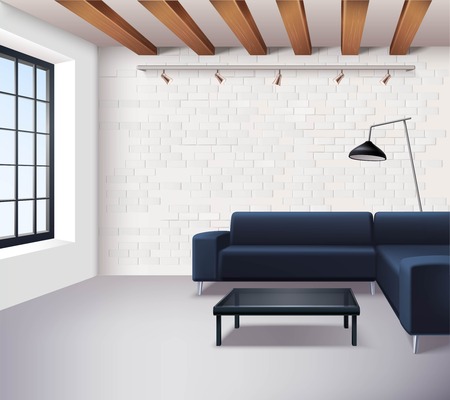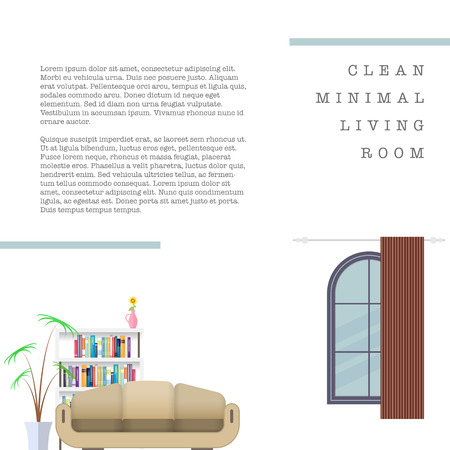Understanding Minimalism in Your Living Room
Minimalism is more than just a design trend—it’s a lifestyle choice that focuses on simplicity, intentionality, and creating spaces that foster peace and functionality. At its core, minimalism encourages you to keep only what adds value to your life and let go of the rest. The living room is often the heart of the home, where families gather, guests are welcomed, and daily life unfolds. That’s why it serves as the ideal starting point for embracing a clutter-free environment. By transforming your living room into a minimalist space, you set the tone for the rest of your home and lay the foundation for habits that support a less stressful, more organized lifestyle. Whether you’re aiming to create a serene retreat or simply want to make everyday cleaning easier, understanding the principles of minimalism will help you make informed decisions as you begin decluttering your living room.
Assessing Your Current Space
Before you can create a truly minimalist living room, it’s essential to take an honest look at what you already have. This step is all about evaluating your space with a critical eye, determining which items genuinely serve a purpose or bring you joy, and which ones are just taking up precious real estate. Start by walking through your living room and making note of everything from furniture to decor pieces—even items tucked away in drawers or on shelves.
Value vs. Clutter: How to Decide
A helpful way to assess your belongings is to ask yourself a few key questions: Do I use this regularly? Does this item add comfort or style? Would I buy this again today? If the answer is no, it may be time to let it go. To make things easier, you can organize your assessment with a simple table:
| Item | Adds Value? | Used Regularly? | Keep or Remove? |
|---|---|---|---|
| Coffee Table | Yes | Yes | Keep |
| Old Magazines | No | No | Remove |
| Family Photos | Yes | N/A (Decor) | Keep |
| Unused Floor Lamp | No | No | Remove |
Be Objective, Not Sentimental
It’s natural to feel attached to certain possessions, but creating a minimalist environment requires objectivity. Focus on how each item fits into your current lifestyle and whether it aligns with your vision for a clutter-free living room. Remember, the goal isn’t to strip away personality—it’s to highlight what matters most and remove distractions.
Tip: Take Your Time
You don’t have to declutter your entire living room in one day. Break the process into manageable sections—start with surfaces, then move on to storage areas and larger furniture pieces. By honestly assessing your space piece by piece, you’ll lay a solid foundation for the minimalist transformation ahead.

3. Sorting and Letting Go
Decluttering your living room is more than just moving items around—it’s about making intentional decisions about what stays and what goes. Start by categorizing your belongings into clear groups: keep, donate, sell, and discard. Use bins or boxes to make sorting easier. When deciding whether to keep an item, ask yourself if it serves a purpose or brings you joy. If it’s been untouched for months or no longer fits your lifestyle, it may be time to let it go.
Practical Strategies for Categorizing
Tackle one section of the room at a time—like shelves, media consoles, or coffee tables—to avoid feeling overwhelmed. Label each box so you can quickly see where everything belongs. For sentimental items, set a limit on how many you’ll keep. Consider taking photos of meaningful objects before letting them go as a way to preserve memories without holding onto physical clutter.
Letting Go Without Guilt
It’s common to feel guilty about parting with gifts or things you spent money on. Remind yourself that keeping items out of obligation doesn’t honor their value. Instead, focus on the benefits: a more open space, less stress, and a home filled only with things you truly love and use. Donating gently used items can also bring comfort, knowing they will serve someone else in your community.
Building Your Minimalist Mindset
Remember, decluttering is a process. Be patient with yourself as you sort and make decisions. Celebrate small wins along the way and recognize that every item you release brings you closer to a calm, functional living room—a true reflection of minimalist living.
4. Smart Storage Solutions
Once youve decluttered your living room, the next step toward a minimalist space is investing in smart storage solutions. The right storage keeps your essentials organized and your surfaces clear, creating a clean and inviting atmosphere. American homes often have multipurpose living rooms, so finding storage that fits both your style and lifestyle is key.
Functional Storage Ideas for Every Living Room
Consider furniture that does double duty—think ottomans with hidden compartments, coffee tables with shelving, or media consoles that hide away electronics and cords. Wall-mounted shelves are a great way to use vertical space without crowding the floor. Don’t forget about built-in options if you’re planning a bigger renovation; they offer seamless storage and blend perfectly with any design.
Popular Smart Storage Options
| Storage Solution | Benefits |
|---|---|
| Storage Ottomans | Provides hidden space for blankets, magazines, and remotes while serving as extra seating |
| Wall-Mounted Shelves | Makes use of vertical space and displays decorative items neatly |
| Nesting Tables | Offers flexibility for entertaining and can be tucked away when not in use |
| Media Consoles with Doors | Keeps electronics, games, and wires out of sight for a tidy look |
Tips for Maintaining an Organized Space
To keep your living room looking its best, regularly assess what you store and avoid accumulating unnecessary items. Label baskets or bins inside cabinets for quick access. Embrace a “one in, one out” policy to prevent clutter from returning. By prioritizing clever storage solutions, you’ll enjoy a living room that’s both practical and visually appealing—a true reflection of modern American minimalism.
5. Maintaining a Clutter-Free Environment
Achieving a minimalist living room is a rewarding first step, but maintaining that clutter-free vibe requires intentional habits and routines. To keep your space from becoming overwhelmed again, consider implementing daily and weekly practices.
Develop Daily Tidying Habits
Make it a point to reset your living room every evening. This could be as simple as putting away remote controls, folding throw blankets, or clearing off coffee tables. These small actions, when done consistently, prevent mess from accumulating.
Designate Spaces for Everything
Clutter often builds up when items don’t have a designated home. Assign specific spots for commonly used items—like baskets for magazines or trays for keys and mail. This not only keeps things tidy but also makes it easier for everyone in your household to pitch in.
Adopt a “One In, One Out” Rule
Whenever you bring a new item into your living room, commit to removing an old one. This simple rule helps you stay mindful about what truly adds value to your space and prevents unnecessary accumulation.
Schedule Regular Declutter Sessions
Even with the best intentions, some clutter can creep back over time. Mark your calendar for monthly or seasonal check-ins to reassess your living room setup. Donate or recycle anything you no longer need and rearrange as necessary.
Create Mindful Shopping Habits
Before buying new décor or furniture, ask yourself if it aligns with your minimalist goals and whether it serves a functional purpose. Being selective with purchases is key to sustaining a clutter-free environment.
By embedding these actionable habits into your routine, you’ll make maintaining a minimalist living room feel effortless—ensuring your space remains peaceful, inviting, and uniquely yours.

